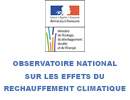Agriculture and the greenhouse effect: economic regulation of reciprocal impacts and compatibility of agricultural and environmental policies – Analysis of the situation in France and extension to the European Union
Agriculture and the greenhouse effect: economic regulation of reciprocal impacts and compatibility of agricultural and environmental policies – Analysis of the situation in France and extension to the European Union
Crop and livestock productions directly contribute to the emission of greenhouse gases through the application of nitrogenous fertilizers, responsible for N2O emissions, and the digestion of ruminants, responsible for CH4 emissions. The various ways in which farm wastes are managed (spreading, etc.) also contribute to methane emissions.
The crop production sector is responsible for CO2 emissions both directly, depending on soil management practices, and indirectly, through the consumption of intermediate goods (fuel, etc.). On the other hand, like forests, agriculture is also a carbon sink.
Conversely, agriculture is highly dependent on climatic conditions (carbon dioxide concentration in the atmosphere, temperature, hydrological system, stability of climatic conditions over time), which could force production systems to adapt or to move. On the basis of modelling experiments integrating technical elements and economic policies on various scales (regional and national), two lines of research could be explored or subjected to further study:
- The assessment of the effects of a double relationship between climate and agriculture on agricultural production and on direct greenhouse gas emissions;
- The compatibility between agricultural policies and environmental policies that affect the sector.
The actual research was based on France and the ensuing models were later operated on the scale of the European Union.
| Coordinators |
Pierre-Alain Jayet, INRA – Economie et Sociologie Rurale |
| Partnership |
INA-PG – CEREOPA |
| Funding |
MEDD
|
| Budget |
37 857.06 € (including tax)
|




